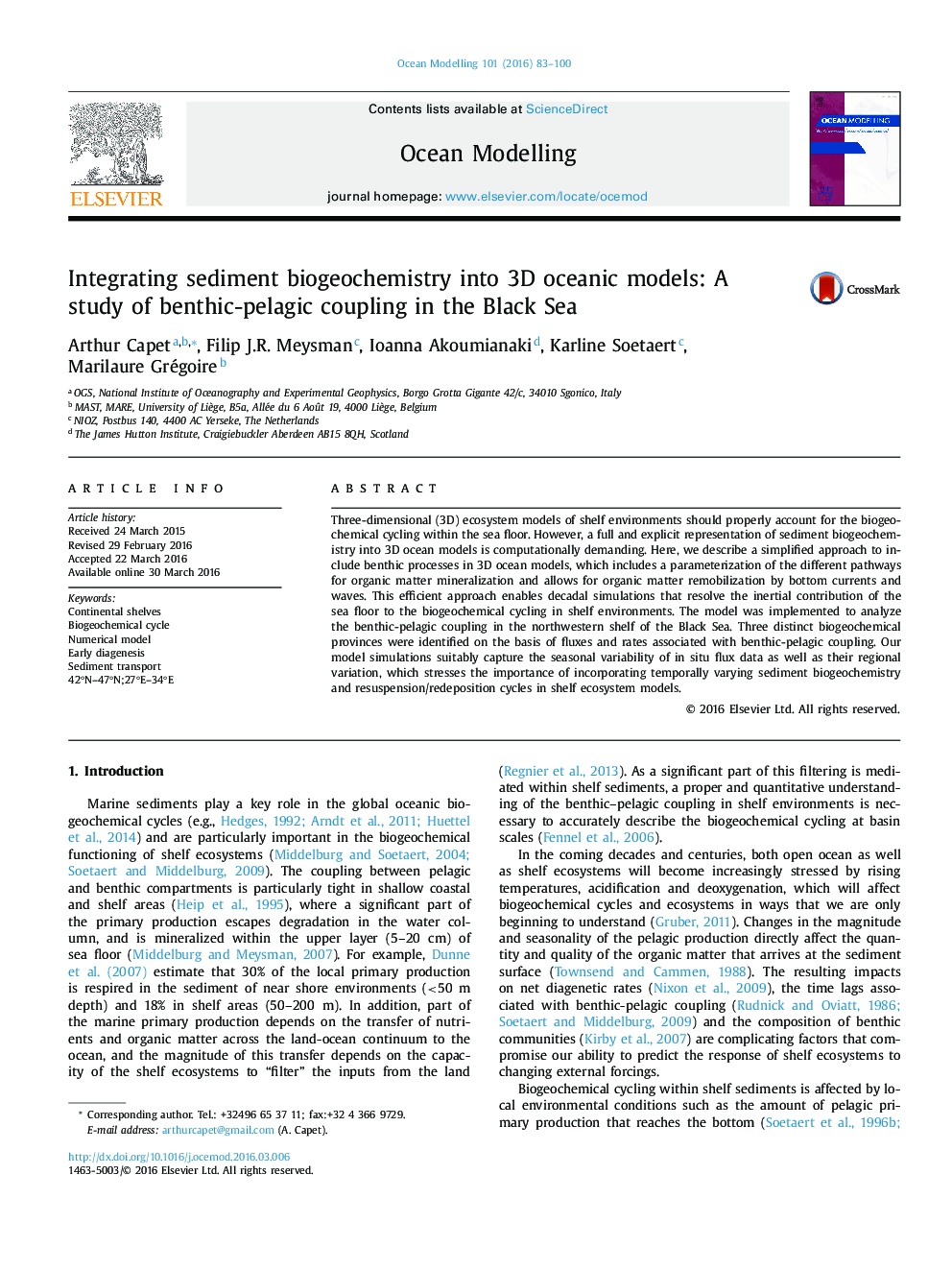| Article ID | Journal | Published Year | Pages | File Type |
|---|---|---|---|---|
| 4551965 | Ocean Modelling | 2016 | 18 Pages |
•We present a novel approach to benthic-pelagic coupling in 3D ocean ecosystem model•It allows dynamic diagenetic rates, responding to local environmental conditions•It accounts for the remobilization of sedimentary organic matter by bottom stress•Its computational efficiency allows multi-decadal, basin-scale, fine resolution setup•We could reproduce observed benthic flux gradients in the Black Sea NW shelf
Three-dimensional (3D) ecosystem models of shelf environments should properly account for the biogeochemical cycling within the sea floor. However, a full and explicit representation of sediment biogeochemistry into 3D ocean models is computationally demanding. Here, we describe a simplified approach to include benthic processes in 3D ocean models, which includes a parameterization of the different pathways for organic matter mineralization and allows for organic matter remobilization by bottom currents and waves. This efficient approach enables decadal simulations that resolve the inertial contribution of the sea floor to the biogeochemical cycling in shelf environments. The model was implemented to analyze the benthic-pelagic coupling in the northwestern shelf of the Black Sea. Three distinct biogeochemical provinces were identified on the basis of fluxes and rates associated with benthic-pelagic coupling. Our model simulations suitably capture the seasonal variability of in situ flux data as well as their regional variation, which stresses the importance of incorporating temporally varying sediment biogeochemistry and resuspension/redeposition cycles in shelf ecosystem models.
